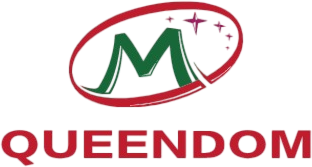With the rapid development of technology, infrared LED has become an essential component in various industries. As a type of light-emitting diode (LED), infrared LED emits infrared radiation, which is invisible to the human eye. This article will provide an in-depth introduction to the infrared LED industry, covering its history, applications, market trends, and future prospects.
History of Infrared LED
The concept of infrared LED dates back to the early 20th century when scientists discovered that certain materials could emit infrared radiation when electrically excited. In the 1960s, the invention of the LED by Nick Holonyak Jr. laid the foundation for the development of infrared LED. Over the years, the technology has evolved, and today, infrared LED is widely used in various fields.
Applications of Infrared LED
Infrared LED has a wide range of applications due to its unique properties. The following are some of the main applications:
1. Remote Control: Infrared LED is widely used in remote controls for consumer electronics, such as televisions, air conditioners, and stereos. It allows users to operate these devices from a distance without the need for a direct line of sight.
2. Communication: Infrared LED is used in wireless communication systems, such as infrared data association (IrDA) and infrared remote control (IRC). These technologies enable devices to exchange data over short distances without the need for a physical connection.
3. Biometrics: Infrared LED is used in biometric authentication systems, such as fingerprint recognition and facial recognition. The technology can capture the unique features of an individual’s body, providing a secure and convenient method of access control.
4. Security: Infrared LED is used in security systems, such as motion sensors and surveillance cameras. These systems can detect the presence of intruders and alert authorities when unauthorized access is detected.
5. Healthcare: Infrared LED is used in medical devices, such as thermometers and endoscopes. These devices can detect infrared radiation emitted by the human body, providing valuable information for diagnosis and treatment.
6. Automotive: Infrared LED is used in automotive applications, such as rearview cameras, adaptive cruise control, and collision avoidance systems. These technologies enhance the safety and convenience of modern vehicles.
Market Trends
The infrared LED market has been growing at a steady pace over the past few years, driven by the increasing demand for smart devices, automation, and security systems. The following are some of the key market trends:
1. Energy Efficiency: As energy consumption becomes a major concern, manufacturers are focusing on developing more energy-efficient infrared LED products. This trend is expected to continue in the coming years.
2. Miniaturization: The trend towards miniaturization is driving the development of smaller, more compact infrared LED devices. This trend is particularly evident in the consumer electronics and biometric authentication markets.
3. Integration: Infrared LED is increasingly being integrated into other technologies, such as sensors, cameras, and displays. This integration is expected to lead to the development of more advanced and versatile products.
4. Customization: The market is seeing a growing demand for customized infrared LED solutions to meet the specific needs of various industries. This trend is likely to continue as the technology becomes more widespread.
Future Prospects
The future of the infrared LED industry looks promising, with several factors contributing to its growth:
1. Technological Innovation: Ongoing research and development efforts are expected to lead to the development of new and improved infrared LED products with enhanced performance and efficiency.
2. Increased Demand: As the world becomes more connected and automated, the demand for infrared LED technology is expected to continue growing.
3. Cost Reduction: With the increasing scale of production, the cost of infrared LED devices is expected to decrease, making them more accessible to a wider range of consumers and businesses.
4. Government Support: Many governments around the world are promoting the development of infrared LED technology as a way to drive economic growth and create jobs.
In conclusion, infrared LED technology has come a long way since its inception. With its diverse applications and growing market, it is poised to play a significant role in shaping the future of various industries. As the technology continues to evolve, we can expect to see even more innovative and exciting developments in the years to come.













Explore More from Queendom Lamp
Stay updated with the latest LED technology, lighting solutions, and industry insights.
Request a Quote About Queendom